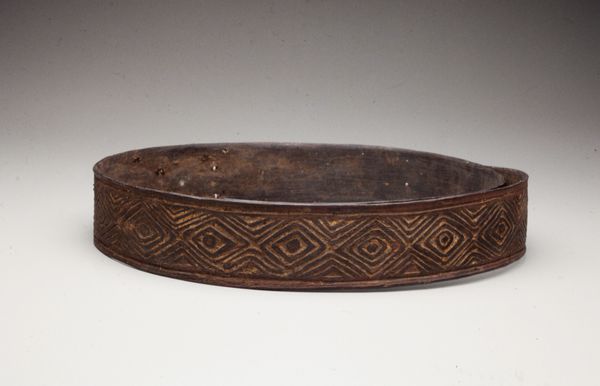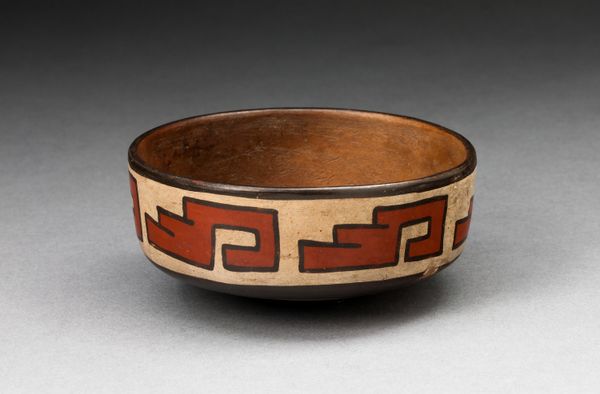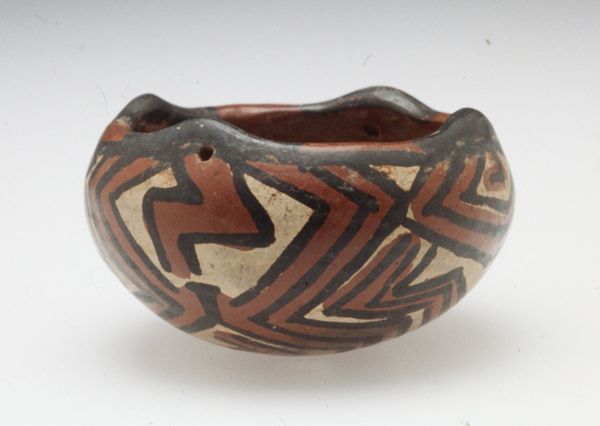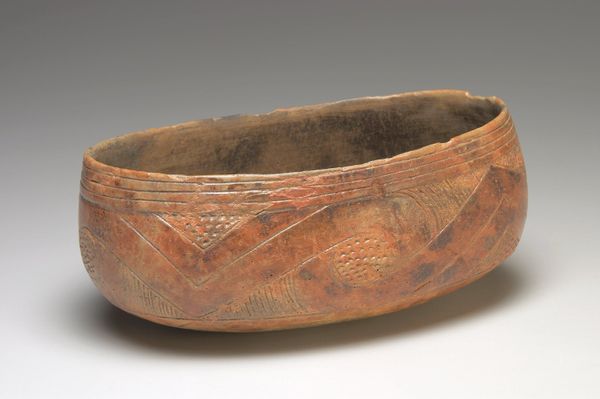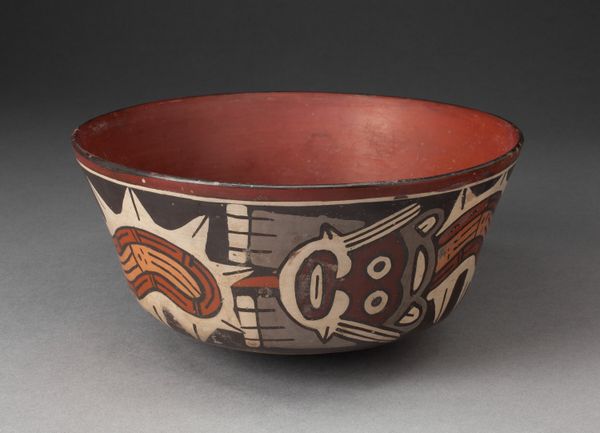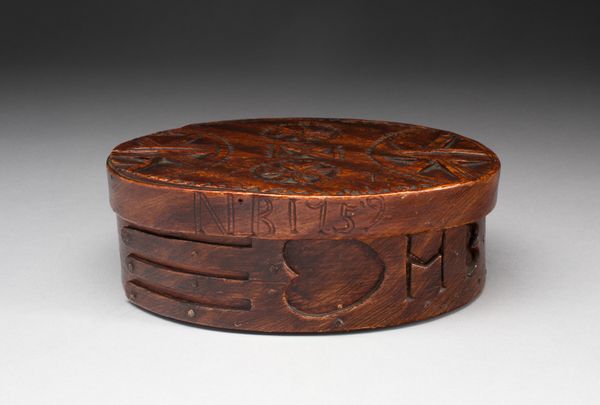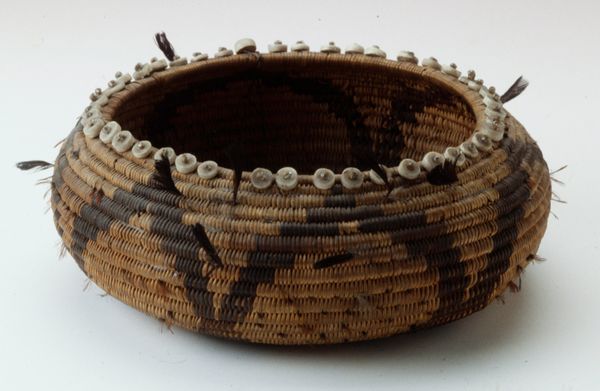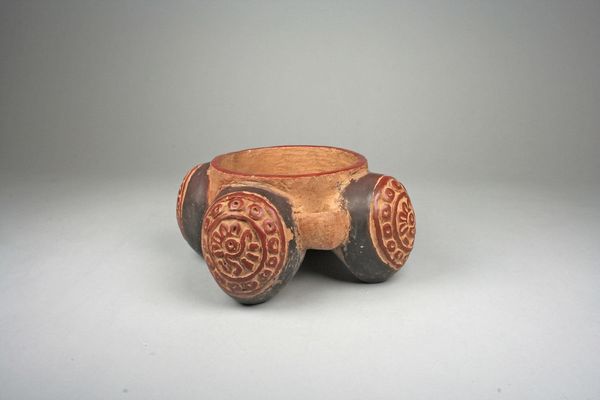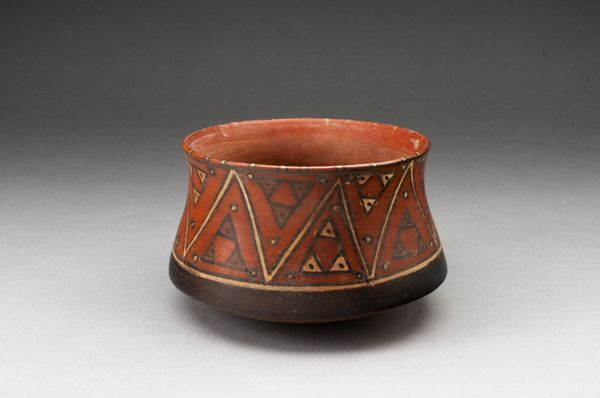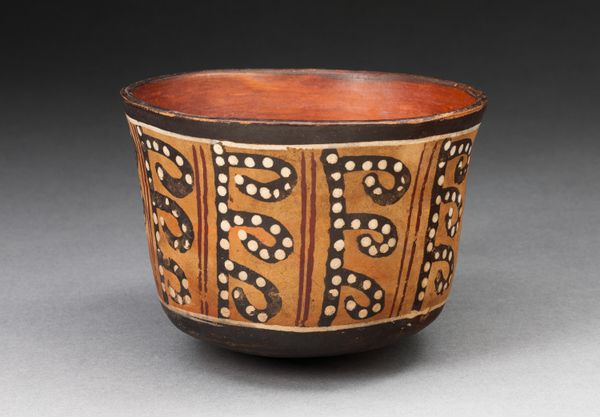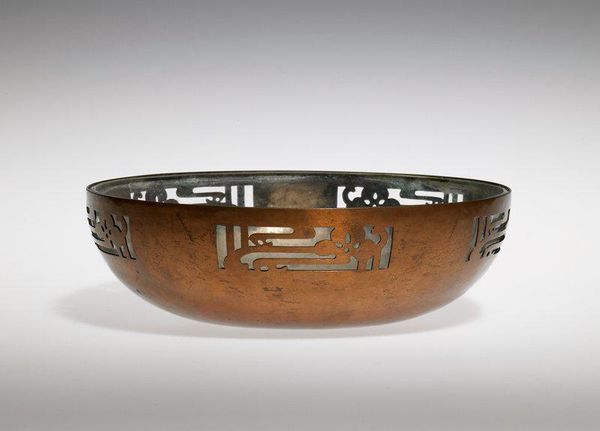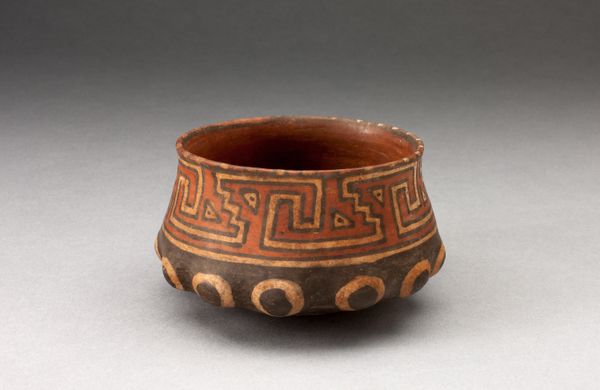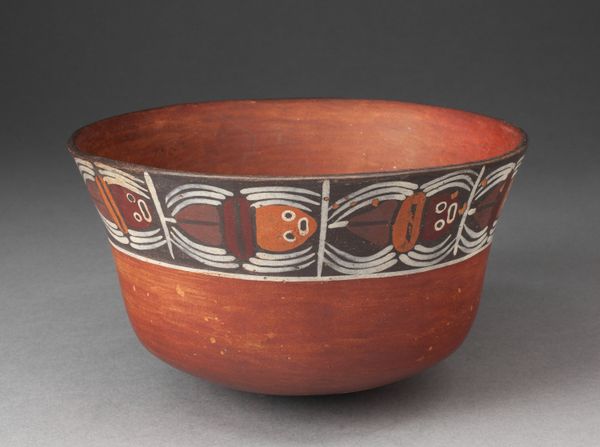
#
sculpture
#
ceramic
Dimensions: 2 3/4 x 8 1/2 x 7 1/2 in. (6.99 x 21.59 x 19.05 cm)
Copyright: Public Domain
Curator: Here we have what is known as a “Bark Belt (titi bae),” likely from the 20th century, currently held at the Minneapolis Institute of Art. Editor: It's kind of mysterious looking. Dark and earthy. The surface is really striking, isn't it? Makes me think of ancient runes or some forgotten script etched onto stone. Curator: Indeed. The ceramic piece embodies certain key elements characteristic of art from Indigenous Americas and Africa. Observe how the carving organizes space and conveys form through repeated, almost rhythmic, engraved lines and motifs. Editor: Rhythmic is a good word for it. I can almost feel the hand of the artist moving along, carving out these patterns. The geometric designs are simple, but they feel full of meaning, like a secret code that I can’t quite decipher. Curator: It's fascinating how these recurring shapes generate visual complexity and balance across the relatively small circumference of the belt, offering an intriguing dialogue between ornamentation and function. Editor: I'm really drawn to the contrast between the dark material and those pale, carved-out lines. Makes the details pop, gives it a very tactile feel. Curator: The texture encourages that response. There’s an interplay of rough and smooth, revealed through a meticulous manipulation of the ceramic surface. Editor: Do you think it was actually worn? Or more symbolic? It does look sort of… ceremonial. Curator: The fact that it's termed a ‘belt’ hints at wearability, but its relatively brittle construction also lends itself to a ceremonial context. Editor: Looking at it, I get this strange feeling of connection, a sense that this object carries stories, maybe warnings, from a people long gone. I wish these objects could whisper their stories directly. Curator: That poetic potential certainly heightens its aesthetic power, inviting subjective readings layered onto formal attributes. Ultimately, "Bark Belt" exemplifies how cultural meaning and aesthetic impact can arise from basic design elements combined effectively in three-dimensional form. Editor: Absolutely. Even stripped of its specific origin, it still resonates deeply. There’s something profound about how fundamental shapes and forms can touch something universal within us. It definitely leaves a lasting impression.
Comments
No comments
Be the first to comment and join the conversation on the ultimate creative platform.
